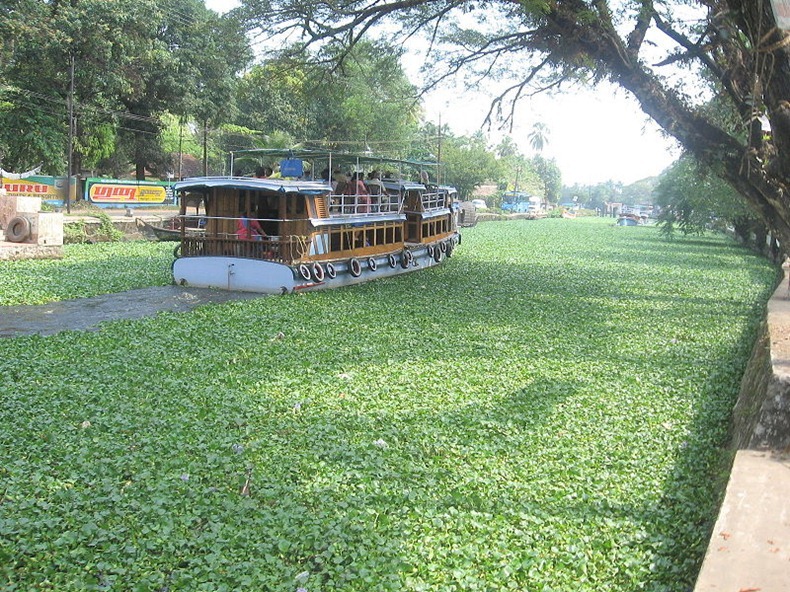The backwaters were formed by the action of waves and shore currents creating low barrier islands across the mouths of the many rivers flowing down from the Western Ghats range. Fed by the rivers, the backwaters are almost free of salty seawater. In certain areas, such as the Vembanad Kayal, artificial barrage has been built to prevent salt water from the sea from entering the deep inside, keeping the fresh water intact.

Photo credit
Many unique species of aquatic life thrive in these water including crabs, frogs and mudskippers, water birds such as terns, kingfishers, darters and cormorants, and animals such as otters and turtles live in and alongside the backwaters. Palm trees, pandanus shrubs, various leafy plants and bushes grow alongside the backwaters, providing a green hue to the surrounding landscape.
Houseboats called kettuvallams are one of the prominent tourist attractions in Kerala. More than 2000 kettuvallams ply the backwaters. The kettuvallams were traditionally used as grain barges, to transport the rice harvested in the fertile fields alongside the backwaters. At some point in time the boats were used as living quarters by the royalty. Converted to accommodate tourists, the houseboats have become floating cottages having a sleeping area, toilets, a dining area and a sit out on the deck. Some ketuvallams are motorised but generally proceed at a slow speed for smooth travel.

Photo credit

Photo credit

Photo credit

Photo credit

Photo credit

Photo credit

Photo credit

Photo credit

Photo credit

Photo credit

Photo credit

Photo credit
Sources: Wikipedia, About
.jpg)








0 komentar:
Posting Komentar